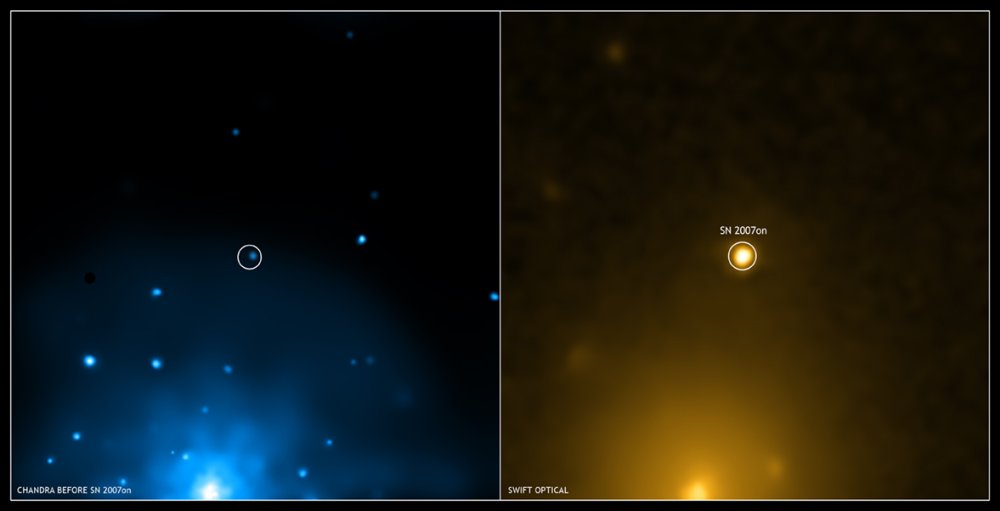
 Credit: X-ray: NASA/CXC/MPE/R. Voss et al.; Optical: NASA/Swift
Credit: X-ray: NASA/CXC/MPE/R. Voss et al.; Optical: NASA/Swift
SN X-ray Progenitor?
Identifying stars that explode, right before they explode, is a tricky proposition since the end of starlife comes swiftly: in thermonuclear deflagrations, in nuclear exhaustion, or maybe in a rapid swirling merger of two dead stellar cores. On the right in the image above is an image of the galaxy NGC 1404 taken by the UV/optical Telescope (UVOT) on the Swift observatory. The circle surrounds SN 2007on, a supernova of Type Ia produced by the explosion of a white dwarf star in a binary system. These types of supernovae are important since they are believed to be "standard candles", events which have the same intrinsic brightness which can serve as an important yardstick to measure cosmic distances. On the left is an image of the same galaxy taken by the Chandra X-ray observatory four years before the supernova. Conspicuous in the SN source circle is a bright source in the Chandra image, believed to be emission from a compact object+normal star companion: a similar system to the supposed precursor of SN 2007on. If true this would be the first time a Type Ia supernova precursor has ever been seen. But astronomers are still debating whether the Chandra source really is the precursor or not; it seems there's a slight but significant difference in the location of the Chandra source and the supernova. Stay tuned for more developments.
<
HEA Dictionary ● Archive
● Search HEAPOW
● Other Languages
● HEAPOW on Facebook
● Download all Images
● Education ● HEAD
>
Each week the HEASARC
brings you new, exciting and beautiful images from X-ray and Gamma ray
astronomy. Check back each week and be sure to check out the HEAPOW archive!
Page Author: Dr. Michael F. Corcoran
Last modified Tuesday, 27-Feb-2024 10:15:20 EST


